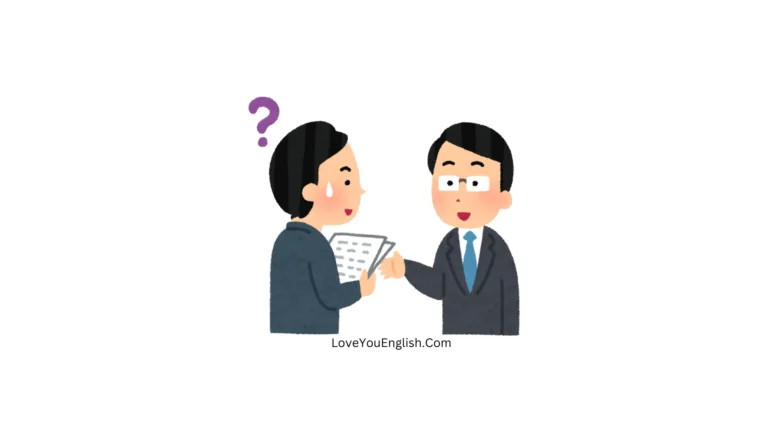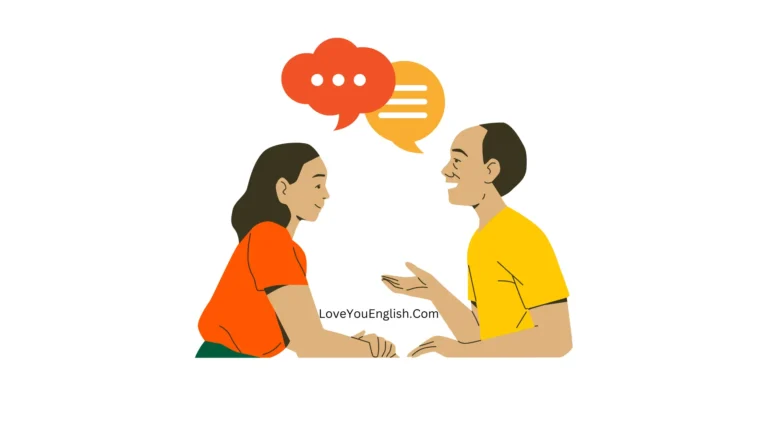English Conversations About Handling Complaints
Characters:
- Sarah – Customer Service Representative
- Michael – New Customer Service Trainee
- Lisa – Angry Customer
- David – Manager
Scene: Customer Service Office
(Sarah is training Michael on how to handle customer complaints when Lisa, an upset customer, approaches the desk.)
Part 1: Acknowledging the Complaint
Lisa: (angrily) Excuse me, but I need to speak to someone about the terrible service I received!
Michael: (nervously) Oh, um… what seems to be the problem?
Sarah: (calmly, stepping in) Good morning, ma’am. My name is Sarah, and this is Michael. We’re here to help. Could you please tell us what happened so we can resolve this for you?
Lisa: (still frustrated) I ordered a laptop from your online store a week ago, and it was supposed to arrive in three days. Not only is it late, but when I called yesterday, your team said it was out of stock! Why wasn’t I informed earlier?
Sarah: I completely understand why you’re upset, and I apologize for the inconvenience. That’s definitely not the experience we want for our customers. Let me check the system and see what happened.
(Michael watches as Sarah handles the situation.)
Michael: (whispering to Sarah) She seems really mad. Should we call the manager?
Sarah: (whispers back) Not yet. First, we listen, empathize, and try to solve the issue ourselves.
Part 2: Investigating the Issue
Sarah: (to Lisa) Ma’am, may I have your order number so I can look into this?
Lisa: (sighs) It’s #45872.
Sarah: Thank you. (types into the computer) I see the issue here. There was a delay in our inventory update, and unfortunately, the laptop you ordered went out of stock before we could notify you. That’s our mistake, and I’m truly sorry.
Lisa: So what now? I needed this for work!
Sarah: I completely understand the urgency. Let me see what options we have. (checks system) We have two alternatives: We can either upgrade you to a better model at no extra cost, or we can issue a full refund and give you a 15% discount on your next purchase. Which would you prefer?
Lisa: (calming down slightly) Hmm… What’s the upgraded model?
Sarah: It’s the newer version with double the storage and a faster processor. It’s usually $200 more, but we’ll honor your original price.
Lisa: That… actually sounds fair. How soon can you deliver it?
Sarah: Since it’s in stock, we can ship it today with express delivery. You’ll get it by tomorrow.
Lisa: Okay, that works.
Part 3: Resolving the Complaint
Sarah: Great! I’ll process the upgrade right away. Also, as a gesture of goodwill, I’ll include a free laptop case. Again, I’m really sorry for the inconvenience.
Lisa: (smiling slightly) Thank you. I appreciate your help.
Sarah: You’re very welcome. Is there anything else I can assist you with?
Sarah: Perfect. You’ll receive a confirmation email shortly. Have a wonderful day!
(Lisa leaves, satisfied.)
Part 4: Debriefing with Michael
Michael: Wow, Sarah, you handled that so well! She went from furious to happy in minutes.
Sarah: (smiling) Thanks! Handling complaints is all about staying calm, listening, and offering solutions. The key steps are:
- Listen actively – Let the customer vent without interrupting.
- Empathize – Show that you understand their frustration.
- Apologize sincerely – Even if it’s not your fault, apologize for their bad experience.
- Offer solutions – Give them options to choose from.
- Follow up – Ensure they’re satisfied with the resolution.
Michael: What if the customer is still unhappy?
Sarah: Then we escalate it to the manager, but most complaints can be resolved at our level if we handle them properly.
(David, the manager, walks over.)
David: I overheard the conversation. Great job, Sarah! Michael, did you learn something useful?
Michael: Definitely! I used to panic when customers got angry, but now I see how to turn a bad situation around.
David: Excellent. Remember, complaints are opportunities to improve customer loyalty. A well-handled complaint can turn an angry customer into a loyal one.
Part 5: Role-Playing Practice
Sarah: Let’s practice. Pretend you’re a customer with a complaint, and I’ll help you.
Michael: (acting as a customer) My food delivery arrived cold, and it’s completely ruined my dinner!
Sarah: (practicing) I’m so sorry to hear that. No one should have to deal with a cold meal. Let me check your order and see how we can fix this. Would you like a full refund, a replacement sent immediately, or a discount on your next order?
Michael: (nodding) That sounds perfect!
David: You’re getting the hang of it. Keep practicing, and soon you’ll handle complaints like a pro.





